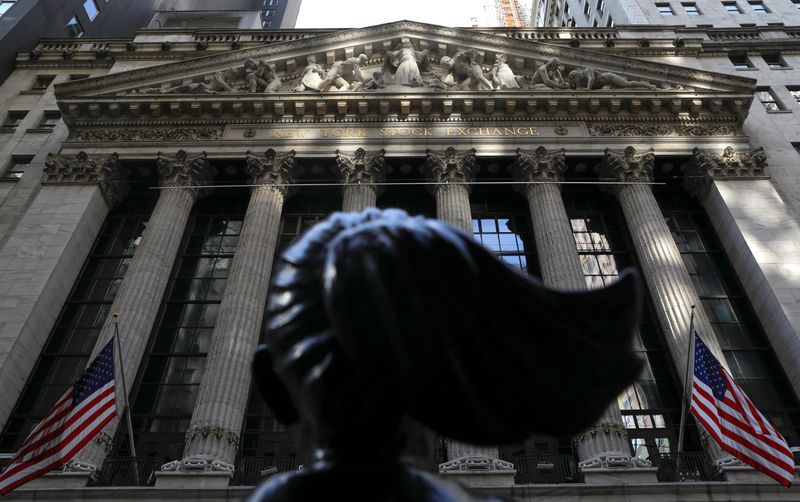By David Randall
NEW YORK(Reuters) -As U.S. stocks sit on hefty gains at the close of a rollercoaster year, investors are eyeing factors that could sway equities in the remaining weeks of 2023, including tax loss selling and the so-called Santa Claus rally.
The key catalyst for stocks will likely continue to be the expected trajectory of the Federal Reserve's monetary policy. Evidence of cooling economic growth has fueled bets that the U.S. central bank could begin cutting rates as early as the first half of 2024, sparking a rally that has boosted the S&P 500 19.6% year-to-date and taken the index to a fresh closing high for the year on Friday.
At the same time, seasonal trends have been particularly strong this year. In September, historically the weakest month for stocks, the S&P 500 fell nearly 5%. Stocks swung wildly in October, a month noted for its volatility. The S&P 500 gained nearly 9% gain in November, historically a strong month for the index.
"We've had a solid year, but history shows that December can sometimes move to its own beat," said Sam Stovall, chief investment strategist at CFRA Research in New York.
Investors next week will be watching U.S. employment data, due out on Dec. 8, to see whether economic growth is continuing to level off.
Overall, December has been the second-best month for the S&P 500, with the index up an average of 1.54% for the month since 1945, according to CFRA. It is also the month most likely to post a gain, with the index rising 77% of the time, the firm's data showed.
Research from LPL Financial showed that the second half of December tends to outshine the first part of the month. The S&P 500 has gained an average of 1.4% in the second half of December in so-called Santa Claus rallies, compared with a 0.1% gain in the first half, according to LPL's analysis of market moves going back to 1950.
Stocks that have not performed well, however, may face additional pressure in December from tax loss selling, as investors get rid of losers to lock in write-offs before year-end. If history is any guide, some of those shares may rebound later in the month and into January as investors return to undervalued names, analysts said.
Since 1986, stocks that were down 10% or more between January and the end of October have beaten the S&P 500 by an average of 1.9% over the next three months, according to BofA Global Research. PayPal (NASDAQ:PYPL) Holdings, CVS Health (NYSE:CVS), and Kraft Heinz (NASDAQ:KHC) Co are among the stocks the bank recommends buying for a tax-related bounce, BofA noted in a late October report.
"The market advance has been extraordinarily narrow this year, and there's reason to believe that some sectors and stocks will really take it on the chin until they get some relief in January," said Sameer Samana, senior global market strategist at the Wells Fargo (NYSE:WFC) Investment Institute.
Despite the market's hefty year-to-date rise, investment portfolios are likely to have plenty of underperforming stocks. Nearly 72% of the S&P 500's gain has been driven by a cluster of megacap stocks such as Apple (NASDAQ:AAPL), Tesla (NASDAQ:TSLA) and Nvidia, which have an outsized weighting in the index, data from S&P Dow Jones Indices showed.
Many other names have languished: The equal-weighted S&P 500, whose performance is not skewed by big tech and growth stocks, is up around 6% in 2023.
Some worry that investor over-exuberance may have already set in after November's big rally, which spurred huge moves in some of the market's more speculative names.
Streaming service company Roku soared 75% in November, for instance, while cryptocurrency firm Coinbase (NASDAQ:COIN) Global climbed 62% and Cathie Wood's ARK Innovation Fund was up 31%, its best performance of any month in the last five years.

Michael Hartnett, chief investment strategist at BofA Global Research, said in a Friday note that the firm's contrarian Bull & Bear indicator - which assesses factors such as hedge fund positioning, equity flows and bond flows - had moved out of the "buy" zone for the first time since mid-October.
"If you caught it, no need to chase it," he wrote of the rally.